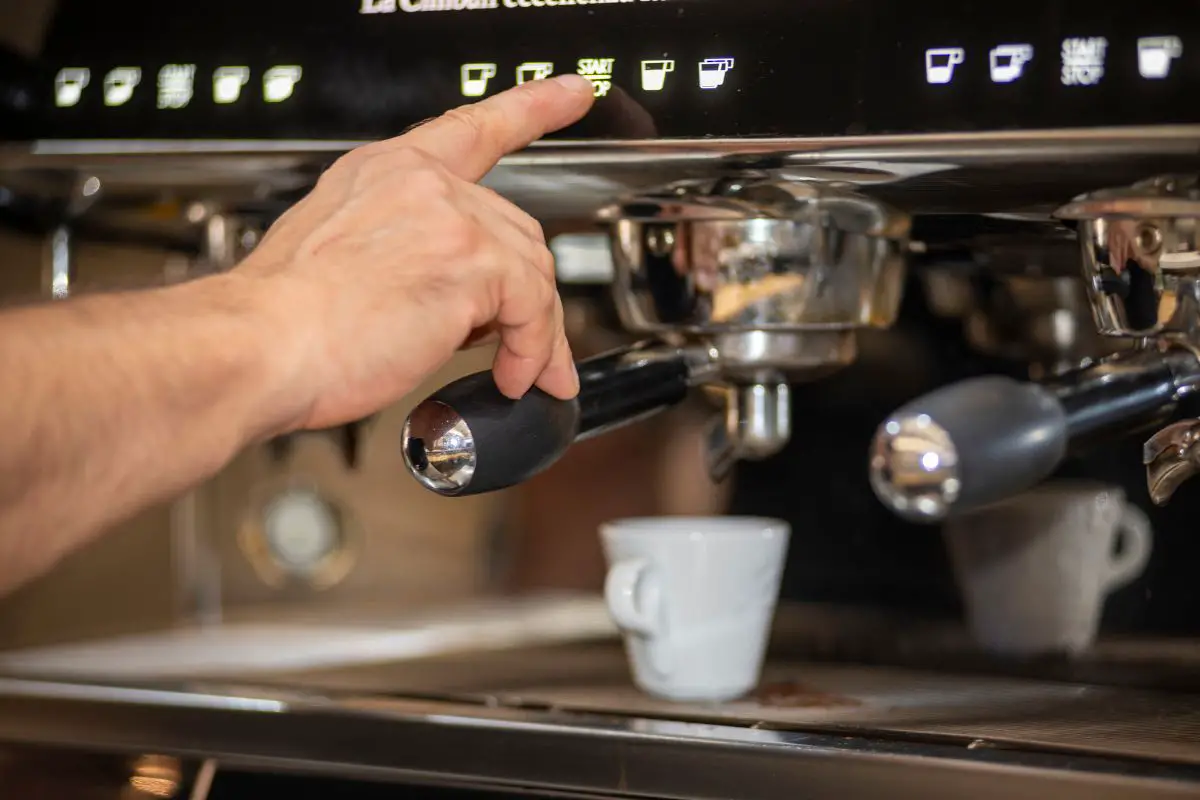An espresso coffee machine is a great coffee maker to have at home. It is used to make espresso shots and a wide range of espresso-based coffee drinks. Espresso makers are available in a wide range of varieties. Some are electric/automatic while others are manually used on a stovetop.
Electric espresso machines are relatively easy to use as they require minimal intervention when brewing. Regardless, most espresso machines are simple to use. You only need to add ground coffee to the filter and allow the machine to brew. In this article, we will show you how to use espresso coffee machine.

How to Use Espresso Coffee Maker
Pulling a tasty shot of espresso requires the right equipment and skills. Here is a step-by-step guide on using a standard espresso coffee machine.
1. Preheat your Espresso Machine
If you want to get the best espresso shots from your espresso machine, you will need to preheat the entire machine. First, turn it on and preheat it for some minutes. Most espresso makers heat sufficiently within 25 minutes.
2. Get your Ground Coffee Ready
For the best results, grind fresh coffee beans just before brewing. Although you can use pre-ground coffee, it does not brew fresh coffee like freshly ground beans. When using an espresso maker, you will need a fine grind size. Just measure enough beans depending on the amount of espresso you want to make.
Once your grounds are ready, measure 20 grams of the ground coffee and add them to the portafilter. You can write down the amount of grounds you have used to remain consistent in the dialing in phase. If you put more than enough grounds in the portafilter, shave away any excess grounds with your hand.
3. Tamp the grounds
You should distribute the grounds evenly on the portafilter before tampering. You can do this by tapping the portafilter lightly on the side with your hand. Alternatively, use your finger to level out the grounds.
When tamping, you need to press the grounds down straight, or else you will end up with an uneven puck. Also, use a fair amount of pressure on the tamper. Tamp until the ground coffee stops settling and ensure the top is leveled out. Polish the top of the puck by giving the tamper a short, quick spin. Brush off any excess grounds hanging on the sides of the portafilter. You are now ready to start brewing.
4. Pull the First Shot
As you pull the first shot of espresso, time how long it will take you to get 2 ounces, which is a double shot. Essentially, each pull will take about 20 to 30 seconds. If you are pulling an espresso within this range, then you have made it the right way. It should be dark, sweet, and rich. However, the first shot is only a baseline for the rest of the shots.
5. Dialing in the Shot
The next step involves dialing the shot, whereby you will be making your espresso as tasty as possible. If your espresso machine has a pressure gauge, record the pressure needed to help you adjust the next shot just in case you have used too little or too much pressure.
If your espresso maker does not have a pressure gauge, you can taste your espresso to know whether it tastes as you want it to. If you pulled your espresso too quickly, change the grind size to a finer size. On the other hand, if you took too much time to pull the first shot, then try a coarser grind for the next shot.
If your shot tastes sour, it means it is under-extracted and you need to use a finer grind. On the other hand, if your espresso tastes bitter, it is an indication that it is over-extracted, hence use a coarser grind for the next shot.
In case you switch the roast levels, especially between dark and light, you will need to repeat the dialing in process. Generally, darker roasts over-extract more easily than lighter roasts. Thus, use a coarser grind for darker roasts and a finer grind for lighter roasts. By now, you should decide whether you will drink the espresso in its pure form like an Italian, or add milk.
6. Steam Milk
If you want to make latte, cortadito, cortado, or macchiato, you will need to steam milk. If your espresso maker has a built-in steam wand, you will find it easy to steam milk. Else, you will need to get a separate milk steamer for this step.
To use the steam wand of your espresso maker, start by pouring cold milk into the stainless steel milk pitcher. Next, turn on the steam wand for a few seconds to eliminate any accumulated condensation in the wand.
Put the tip of the steamer wand below the milk surface. Turn on the steam. Froth the milk to the desired consistency. Do not deep the steamer wand further below the milk surface during this stage.
Once you attain the desired frothiness, plunge the tip of the steamer wand into the bottom of the milk vessel. Continue steaming the milk until you attain the desired temperature. Wipe the wand down to keep it clean.
Summary
As a coffee lover, you will want your espresso creamy, full of flavor, and rich. You only need patience and practice to brew tasty espresso like a barista. Thankfully, we have shown you how to use espresso coffee machine to make espresso coffee. You can also use espresso shots to make other espresso-based coffees such as latte, cappuccino, americano, and mocha among others.
Also Read: